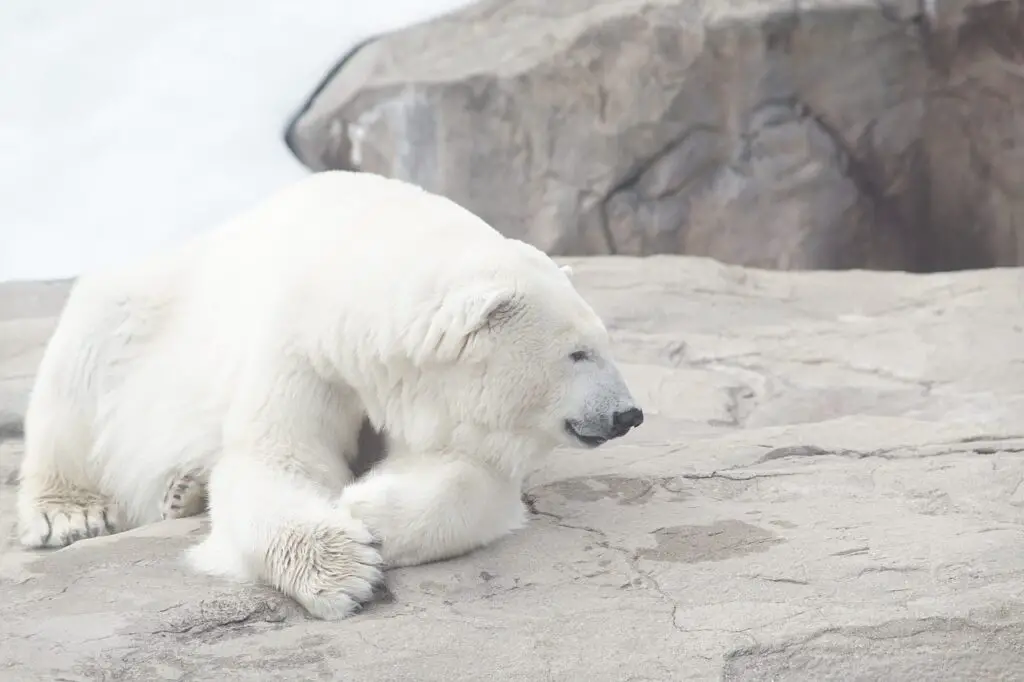Polar bears face extinction along with many other species. The Arctic region and the nearby land masses are home to polar bears. There are 19 recognized subpopulations, and it is believed that there are 20,000 to 25,000 of each.
The World Conservation Union (IUCN) has designated polar bears as fragile, and the US Endangered Species Act lists them as endangered species. However, some contend that polar bear populations have grown since the 1950s and are presently stable. What is the current state of this species?
There are a few things to note regarding polar bear populations:
- How many bears there were in the 1950s and 1960s is an unknown quantity. Back then, rather than using data from scientific surveys, estimates relied on anecdotal information given by hunters or explorers.
- Numerous things, including hunting, pollution, and oil production, have an impact on polar bears. Most significantly, hunting caused a significant reduction in several subpopulations, especially with the development of snowmobiles, aircraft, and icebreakers. A rise in polar bear populations followed the implementation of the International Agreement on the Conservation of Polar Bears in 1973, which limited or even outlawed hunting in some instances.
- Not all subpopulations are impacted by climate change to the same extent, and while certain subpopulations have been extensively researched, for others there is not enough information to draw general conclusions about the present and previous numbers.
- What do the numbers truly mean, keeping this disclaimer in mind? Of the 19 recognized subpopulations of polar bears, 8 are in decline, 1 is rising, 3 are stable, and 7 lack sufficient evidence to draw any conclusions, according to a 2009 study by the IUCN Polar Bear Specialist Group.
The reduction in certain subpopulations is caused by both habitat deterioration and overharvesting. It’s vital to evaluate how future climate change is anticipated to impact polar bears’ habitat in order to comprehend why the IUCN and US Endangered Species Act view them as being in danger.
Polar bears are highly specialized creatures whose whole life cycle and source of food is mainly dependent on sea ice. Arctic sea ice has been shrinking for the past 30 years, according to satellite data, and predictions indicate that this trend will continue as long as temperatures continue to rise. Polar bears are impacted by changes in sea ice in a number of ways:
- Bears have less time to hunt and, as a result, less time to store fat due to the early departure of the summer sea ice.
- There are various effects of the sea ice’s decline and disintegration. The bears are forced to swim farther, depleting part of their fat reserves. Additionally, it hinders movement and den building and decreases the number of seals, which is the bears’ primary food source. Additionally, it makes the bears spend more time on land, perhaps increasing their mortality rate through greater contact with people.
- We may examine subpopulations in the southern part of the polar bear’s range, where habitat alterations have been most pronounced thus far, to obtain an indication of the possible effects of future climate change on polar bears. One of the better-researched subpopulations is that of western Hudson Bay, which serves as an excellent illustration. Here, ice floe break-up occurs 30 years sooner than it did previously, hence shortening the feeding period by around three weeks. Thus between 1980 and 2004, the average weight of female polar bears decreased by around 21%, and between 1987 and 2004, the population decreased by 22%. There is proof of increasing cub mortality in Alaska as a result of sea ice loss.
Climate change and polar bears
Sea ice cover is thinning by almost 4% per decade in the Arctic, where temperatures are rising at least twice as quickly as the global average.
Studies have shown that polar bears’ capacity to find food is impacted by the disappearance of sea ice. In the late spring and early summer, polar bears consume the ringed seals that live at the edge of the ice, providing them with two-thirds of the energy they require throughout the year. The bears must go longer periods without food because they have less time to hunt prey as the ice retreats earlier in spring and forms later in winter.
Researchers have discovered that in sows (adult female polar bears), this can lead to a drop in body composition and a lower average weight. According to a study, fewer cubs survive, and those that do are smaller.
Although polar bears have shown some ability to adapt to changes in their environment, such as by foraging for food on land, scientists predict that as sea ice diminishes and populations decline, polar bears will become more food-stressed.
Conclusion
In conclusion, the effects of future climate change on polar bears’ habitat are the reason the species has been listed as threatened. Where data are available, the current study of subpopulations clearly demonstrates that such subpopulations are primarily in decline. Polar bears will face more risks as their environment continues to deteriorate.
